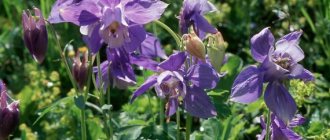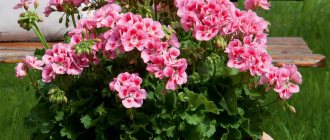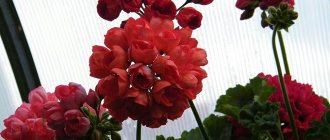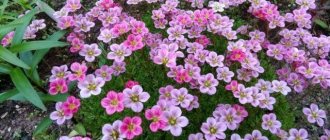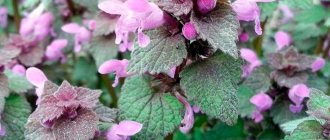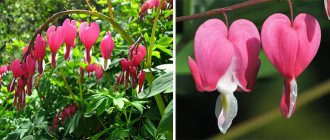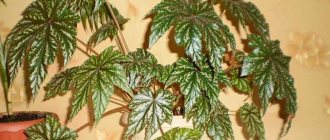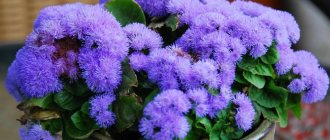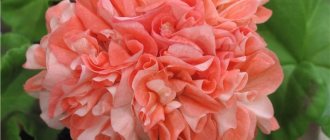It is convenient to propagate pelargonium by cuttings. This is the simplest and most effective method, which in 99% of cases allows you to get good results. However, if we are talking about rare varieties of geraniums, which are quite difficult to find on the shelves of florist shops, the best option would be the seed method of propagating geraniums. Today there are a sufficient number of seeds of excellent quality on sale, from which you can grow a rare plant species.
Seed requirements
In order for pelargonium seedlings to sprout and develop successfully, it is necessary to select high-quality planting material. The seeds should be brown, oblong in shape and always hard. Other options for seeding material can either produce low-quality seedlings, or even leave the grower without a “harvest.” To avoid such troubles, you should not buy seeds at the market or in supermarkets. For this purpose, it is better to visit a specialized store, the quality of the goods in which will be guaranteed to be high. Good seeds are sold ready for sowing, so you don’t have to do any complicated manipulations to get them to germinate.
Geranium seeds
Also, when choosing planting material, pay attention not only to the beauty, shape and richness of the shade of the buds, but also to the maintenance conditions that the flower will need to provide for healthy growth and full flowering. If creating the appropriate conditions necessary for growing the selected type of geranium from seeds at home seems too difficult to you, it is better to opt for another variety of pelargonium.
Choosing a pelargonium variety
Now many agricultural companies have launched the production of pelargonium seeds for every taste and budget. There are many F1 hybrids that have a number of advantages:
- actively and rapidly growing;
- have a compact bush shape;
- bushes well;
- resistant to diseases.
There are also many types of pelargonium: ivy-leaved, ampelous, zonal pelargonium, rosebundum, with double and non-double flowers, with falling and non-falling flowers.
Photo: Rosebund pelargonium.
The color of the flowers is also very diverse. It comes in pure white and various shades of pink. From the most delicate pale pink tints to bright fuchsia. There are also dark burgundy and even dark purple colors.
When to plant geraniums
There is no specific answer to this question. It all depends on the gardener’s desire and ability to provide the seedlings with the required amount of light. Geranium is not a particularly picky plant to grow.
Florists recommend sowing in spring or summer, when daylight hours approach their maximum. However, if you have special equipment with which you can provide the seedlings with the required amount of light, there will be no time restrictions for you. It will take 3-5 months for geraniums to grow to medium size.
Lighting and air temperature
When caring for young seedlings, you need to remember their need for light. It is better to place containers with seedlings on eastern or western windows. On the south side, shading will be required from direct sunlight, which even in winter can damage the delicate foliage.
During the period of active growth and formation of shoots, geraniums should be illuminated for at least 16 hours. If there is not enough natural light, then additional lighting is provided in the evening. In summer, flower pots are taken out to the balcony, terrace or garden.
In the room where pelargonium is grown, it is necessary to maintain an optimal temperature. It should be at 20-25 degrees. In winter, an adult plant can withstand a brief drop in temperature of up to 10 degrees. But for young seedlings such fluctuations are disastrous.
Preparing seeds for sowing
If you purchased high-quality seeds from a well-known company, you will not need to carry out complex preparatory procedures. All you need in this case is to store the planting material in a dry, dark place, protected from insects and sunlight.
If the packaging with seeds indicates that the material is not prepared for planting, or you have some doubts about the quality of preparation, additional processing will be required. To do this, use phytohormones (“Epinom”, “Zirconom”), after which the seedlings are soaked in warm water for several hours. Carrying out such procedures helps accelerate seed germination and improves the quality of seedlings.
The most problematic for gardeners are seeds grown and collected at home. This will require a maximum range of activities. First, the material is cleared of the coarse top layer, which can slow down the germination process. To do this, the seeds are sanded using sandpaper. After this, they are treated with phytohormones (“Epin”, “Zircon”) and soaked in warm water for several hours.
Important! When using seeds obtained at home, the likelihood of obtaining high-quality seedlings is extremely low. The reason for this state of affairs is the loss of the gene transmitted by the mother plant by hybrid varieties of pelargonium during seed propagation.
Features of cultivation
35-45 days after planting the seeds, picking is carried out. By this moment, the seedlings should have 3 developed leaves or more. Before carrying out the procedure, the soil substrate is watered with a fungicidal agent. After diving, do not forget to treat the seedlings with this drug about once a week.
Before planting in the soil, pelargonium should be hardened off. If you have a cool balcony or veranda, the plant can be placed there for a while. Next, the flower gets used to the harsher conditions of the street. The pot with seedlings is taken out for 2 hours during the day, and this time increases each time.
Pelargonium can be planted in open ground when the average daily temperature outside is above +15°C, and at night the thermometer does not drop below +5°C. If there is a danger of spring frosts, it is better to postpone transferring seedlings to open ground until a later period.
The most suitable for the plant are open sunny areas with loose, fertile soil structures. In order for the plant to bush well, its tops need to be pinched several times during the growing season.
Preparing the soil and container
The seed material is dry, so it is sown in loose soil. Planting seeds in clay or too dense soil is unacceptable. The soil mixture can be purchased at a specialty store or you can prepare it yourself. To prepare the substrate, use the following proportions:
- peat, sand and turf soil are mixed in a ratio of 1:1:2;
- sand and peat are mixed in equal parts (1:1);
- peat and perlite are mixed in equal proportions (1:1).
The most acceptable is the first soil option.
Important! Choose quality ingredients when preparing the soil. Poor quality soil can spoil the seeds.
Sowing seeds is carried out both in separate containers and in a common pot. By choosing the first option, you are guaranteed to protect the root system of future seedlings from damage at the time of transplantation. The second option, in case of careful handling of seedlings, is also convenient and practical. The main thing is to plant the seeds at a distance of 5–7 cm from each other.
The container must be deep so that its volume is sufficient to accommodate the soil and for a complete drainage layer necessary to provide the roots with oxygen.
Pre-planting treatment of seed material
As already mentioned, geranium seeds have a dense shell, which makes their germination difficult. Sometimes you have to wait quite a long time for germination, but the seeds still do not germinate. The reason for failure is improper seed treatment before planting or lack thereof.
Before planting, geranium seeds must undergo scarification - a procedure to remove the dense film. It is not difficult to carry out this procedure yourself. To do this you will need fine sandpaper. With its help, only the top dense layer is removed from the seeds, and no deep tears remain.
You need to process each seed separately, rubbing it on sandpaper several times.
How to plant geranium seeds
Sowing geranium seeds is no different from other plants. The pot is filled with drainage, and then with soil, the seeds are laid out and covered with sand or soil.
Important! The seeds should be at a depth of no more than 3–4 cm. Otherwise, their germination will take too long.
After filling the seeds, we moisten the soil with a spray bottle, cover the container with film or glass, place the pot in a well-lit place and wait for the result. Growing pelargonium with seeds requires a room temperature of +23 °C. Lower rates may stop the germination of seedlings.
Planting seeds is the best way to propagate pelargonium
Pelargonium is a perennial plant. The versatility of the flower is that, in addition to growing in protected soil conditions, it can become a wonderful decoration for a garden plot. The leaves of the plant are used in the production of essential oils and as a medicine in folk medicine.
Pelargonium seeds are elongated, large, brown in color
Planting pelargonium seeds is considered one of the best methods, because such seedlings are unpretentious, resistant to diseases and are always characterized by abundant flowering. In addition, the seeds germinate quickly even with a lack of sun. When cuttings, problems arise due to improper watering and unsuitable soil.
Care for sowing and seedlings
Be sure to lift the film once a day, providing the seedlings with an influx of oxygen. If everything is done correctly, the first shoots will appear within 4 weeks .
If you create the right conditions, the new “generation” of seedlings grows quickly enough and does not cause much trouble. But do not forget that young individuals are too fragile. Therefore, it is necessary to protect new seedlings from drafts, strong winds that can break fragile stems, and exposure to sunlight (obligatory shading of seedlings placed on a southern windowsill is necessary).
Growing geraniums from seeds at home requires providing the seedlings with a sufficient amount of moisture. To avoid flooding the seedlings, daily watering with measured application of moisture is recommended (a regular pipette can be used as a dispenser). In winter, watering should be more moderate than in summer.
If water gets on the stems during watering, black spots may appear on the skin of the young plant. They can be eliminated by watering the seedling with a solution of potassium permanganate or phytoalcohol.
Important! After the seedlings emerge, the temperature must be lowered to +20…+16 °C. If the seedlings become too cold, it will be impossible to save the young individuals.
The first large leaf of seedlings is usually released 1–2 weeks after germination. The intensity of subsequent growth will depend on temperature conditions, soil quality and irrigation intensity.
First and second sowing of pelargonium seeds: sowing in the ground, in a common seedling container
We did two sowings in the ground at different times of the year, fundamentally different: in the fall and in the spring. The principle of sowing is the same, the only difference is time.
Any small plastic containers with regular soil for seedlings are suitable for sowing seeds. We bought a standard seedling container with a transparent lid. For sowing, we purchased 4 different bags of pelargonium. We did not notice any difference in seed germination; all seeds germinated without problems.
We sown the seeds in furrows at a distance of 2-3 cm, sprayed them with a spray bottle and lightly sprinkled them with soil.
The container with the seedlings was covered on top with the lid that came with the kit, but you can cover it with glass or regular cling film.
On average, our seeds sprouted fairly well 5 to 10 days after sowing.
The optimal soil temperature for seed germination is considered to be somewhere around +21...+23 °C, in our room it was about +20, so everything is within the normal range.
As soon as the first cotyledon leaves unfolded, we sprinkled the soil with vermiculite to avoid the development of rot and black leg in the seedlings.
About a month after sowing, we planted the grown seedlings into separate pots.
But what follows is more and more interesting, or, as Alice said, “more wonderful and more wonderful.” So, we carefully follow the chronology of the first sowing : on October 1 - we sow pelargonium in the ground, on November 7 - we plant it in individual pots, and only on March 9 - in separate pots!!!! Those. a delay in the development of such seedlings is obvious. And these seedlings bloomed not even in June, in JULY!
What about the second seeding??? on March 3 , planted them in individual containers on March 18 These are the tricks of nature)
So, after being seated in separate pots, all the pelargos were placed on the table next to the window and with a backlight lamp. Young plants were arranged so that the leaves did not touch each other.
SO the conclusion: pelargonium seeds in February - this is the optimal time for the middle zone.
Sometimes you can sow in December-January, but this is done either in the southern regions or in the presence of additional lighting. When sown early, the seedlings stretch out, get sick more often, and bloom no earlier than in February (our October sowing bloomed only in mid-summer). Before planting in flower beds and containers, we managed to feed the young plants twice with a weak solution of fertilizers; the first feeding was carried out two weeks after transplantation.
And so we waited until May, or rather the second May working weekend, when we planted geraniums in pots and soil.
